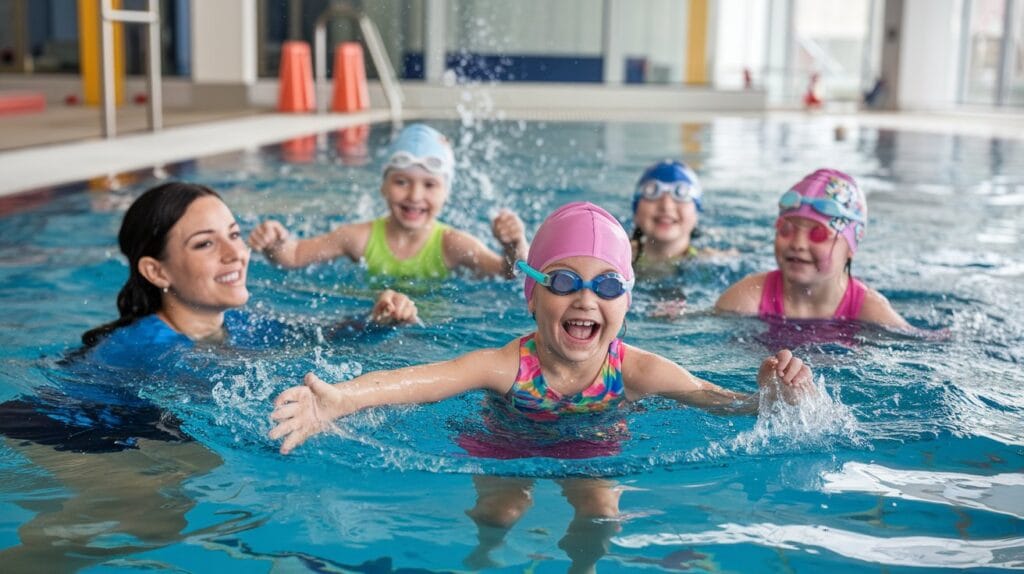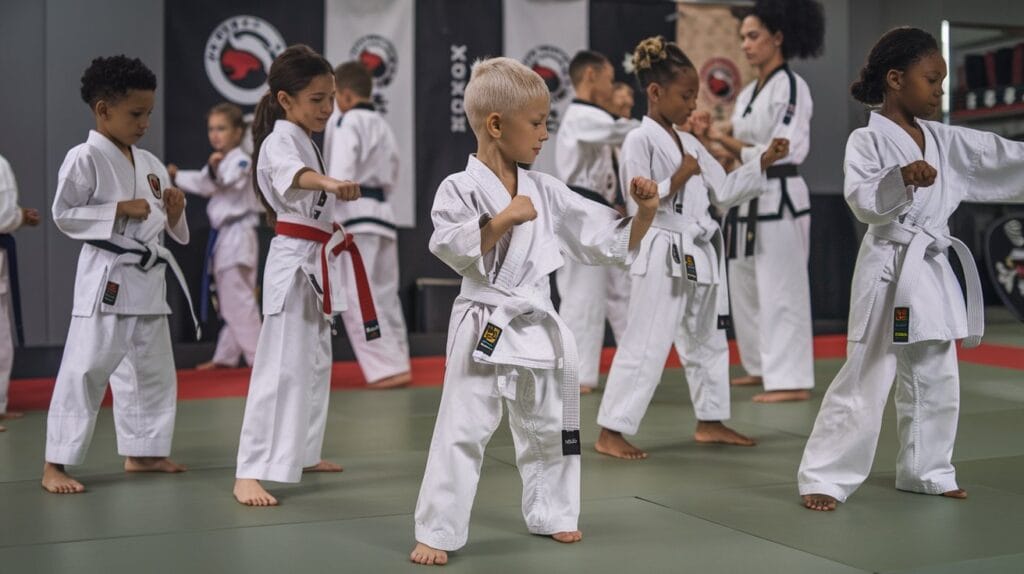The Best Sports for Young Children
Table of Contents
Introducing children to sports at a young age not only helps them stay active but also builds lifelong skills that contribute to their physical, emotional, and cognitive development. In the U.S., where sports play a significant cultural role, choosing the right activities for young children becomes crucial. Research has shown that specific sports offer unique developmental benefits depending on age, interests, and cognitive abilities. In this article, we explore the best sports for young children based on cognitive research, offering parents insights into how they can optimize their children’s growth and enjoyment.

Why Are Sports Important for Young Children?
From a cognitive standpoint, sports play a vital role in early brain development. According to research published in the Journal of Child Psychology and Psychiatry, physical activity stimulates areas of the brain responsible for problem-solving, attention, and emotional regulation. This means that, aside from building muscles, sports also help children build stronger mental faculties.
Furthermore, sports help children develop social skills, self-esteem, and teamwork capabilities, which are equally essential to their holistic development. Below is a list of the cognitive and physical benefits of sports for young children:
| Benefits | Physical Development | Cognitive Development |
| Motor skill improvement | Muscle strength, balance, and coordination | Enhances focus and problem-solving abilities |
| Social interaction | Teamwork, communication | Empathy, emotional regulation |
| Self-esteem and discipline | Mastery of skills, goal setting | Decision making, time management |
Best Sports for Young Children Based on Cognitive and Physical Development
When selecting sports for young children, it’s essential to consider both the age and developmental stage of the child. Children aged 3–8 years often exhibit rapid growth in motor skills and cognitive abilities, making it critical to select sports that match these evolving needs. Below are some sports ideal for children in different age groups, along with their respective benefits.
1. Swimming (Ages 3-7)

Swimming is one of the most recommended sports for young children due to its low impact and ability to engage almost every muscle group. For children aged 3–7, swimming helps in building coordination, strength, and endurance without the risk of injury associated with contact sports.
Cognitive Benefits of Swimming:
- Concentration and Focus: Swimming requires children to follow complex sequences and techniques, which improves their attention span.
- Cognitive Flexibility: According to a study published in Developmental Neuropsychology, swimming enhances cognitive flexibility, allowing children to adapt to new challenges more effectively.
Physical Benefits:
- Muscle Development: Swimming strengthens core muscles, arms, and legs, contributing to overall physical fitness.
- Balance and Coordination: Due to the water’s resistance, children improve balance and motor coordination.
| Age Group | Cognitive Benefits | Physical Benefits |
| 3-4 years | Develops attention and motor skills | Builds core strength, improves balance |
| 5-7 years | Enhances problem-solving abilities | Increases endurance and coordination |
2. Soccer (Ages 4-8)
Soccer, widely popular across the U.S., is an excellent choice for young children as it enhances coordination, teamwork, and cognitive development. It involves running, kicking, and strategic thinking, all of which contribute to a child’s cognitive and physical growth.
Cognitive Benefits of Soccer:
- Strategic Thinking: Soccer requires quick decision-making and spatial awareness, helping children develop cognitive processing speed.
- Memory Enhancement: Research in Frontiers in Psychology suggests that the cognitive demands of soccer, such as remembering tactics and strategies, improve a child’s working memory.
Physical Benefits:
- Coordination: Soccer enhances hand-eye coordination, as children learn to control the ball while moving across the field.
- Cardiovascular Fitness: Running and sprinting improve cardiovascular endurance, benefiting overall heart health.
| Age Group | Cognitive Benefits | Physical Benefits |
| 4-5 years | Improves spatial awareness | Builds endurance, leg strength |
| 6-8 years | Enhances decision-making and strategy | Increases cardiovascular fitness |
3. Gymnastics (Ages 3-7)

Gymnastics is perfect for younger children as it fosters both physical and cognitive development. It is particularly effective in improving balance, coordination, and flexibility. Gymnastics also encourages children to push the limits of their mental resilience as they learn new techniques.
Cognitive Benefits of Gymnastics:
- Attention to Detail: Gymnastics involves complex routines that require focused attention and precision, which aids in enhancing a child’s attention span.
- Self-Regulation: Children learn discipline and the ability to regulate their emotions through gymnastics, as it requires mastering patience and overcoming fear.
Physical Benefits:
- Flexibility: Regular practice of gymnastics increases flexibility, helping children develop better posture and coordination.
- Balance and Strength: Activities like cartwheels, balance beams, and flips improve core strength and balance.
| Age Group | Cognitive Benefits | Physical Benefits |
| 3-4 years | Increases attention span | Develops balance and flexibility |
| 5-7 years | Enhances self-regulation | Builds strength, coordination |
4. Tennis (Ages 5-8)
Tennis is an excellent individual sport that introduces children to strategic thinking and coordination. Its repetitive and controlled nature is ideal for children aged 5–8, helping them improve their hand-eye coordination, reflexes, and cognitive abilities.
Cognitive Benefits of Tennis:
- Problem-Solving Skills: Tennis requires players to quickly assess their opponents’ movements and react accordingly, improving decision-making and problem-solving skills.
- Memory and Focus: Learning different strokes, rules, and strategies in tennis helps to enhance working memory and focus.
Physical Benefits:
- Hand-Eye Coordination: The ability to track the ball and time a swing accurately is a great way to improve hand-eye coordination.
- Endurance and Reflexes: Tennis involves a lot of running and quick reflexes, making it excellent for cardiovascular health and reaction speed.
| Age Group | Cognitive Benefits | Physical Benefits |
| 5-6 years | Improves focus and reaction speed | Enhances reflexes and endurance |
| 7-8 years | Develops problem-solving abilities | Builds coordination, strength |
5. Martial Arts (Ages 4-8)

Martial arts, such as Taekwondo, Karate, and Judo, are excellent sports for young children due to their focus on discipline, respect, and self-defense. These sports offer both physical and mental challenges that are perfect for developing children’s cognitive and emotional intelligence.
Cognitive Benefits of Martial Arts:
- Focus and Discipline: Martial arts heavily emphasize mental discipline and the ability to concentrate on tasks, which are transferable to academic performance.
- Emotional Regulation: According to research in the Journal of Pediatrics, children who participate in martial arts tend to have better emotional regulation and less aggression, as these sports teach self-control.
Physical Benefits:
- Strength and Flexibility: Martial arts build overall body strength and increase flexibility through various techniques and movements.
- Coordination and Balance: Children learn to control their body movements, leading to better coordination and balance.
| Age Group | Cognitive Benefits | Physical Benefits |
| 4-5 years | Builds self-control and focus | Enhances balance, flexibility |
| 6-8 years | Develops emotional regulation | Increases strength, coordination |
Frequently Asked Questions (FAQs)
Q1: What is the best age to introduce children to sports?
The best age to introduce children to sports is around 3–4 years old when they begin to develop basic motor skills and coordination. At this age, focus on fun, simple activities like swimming and gymnastics, gradually progressing to more structured sports like soccer and tennis as they grow older.
Q2: How many sports should my child try at once?
It’s recommended that young children try multiple sports in their early years to explore their interests and strengths. Participating in various sports helps in overall development and prevents burnout from specializing too early.
Q3: How can I tell if my child is ready for competitive sports?
A child is ready for competitive sports when they show interest in rules, teamwork, and the ability to handle winning and losing. This typically occurs around the age of 6–8 years. It’s important to ensure that the competitive environment is fun and not overly stressful.
Q4: Can playing sports improve my child’s academic performance?
Yes, multiple studies have shown that children who play sports tend to perform better academically. Sports improve focus, time management, and cognitive flexibility, which are all beneficial for school performance.
Q5: What should I do if my child doesn’t enjoy a sport?
If your child doesn’t enjoy a sport, it’s important to listen to their feelings and allow them to explore other activities. Forcing a child to continue can lead to frustration and decreased interest in physical activity overall.
Conclusion
Choosing the best sport for your child involves considering their physical and cognitive development. Sports like swimming, soccer, gymnastics, tennis, and martial arts offer a balanced
- Best, J. R. (2010). Effects of physical activity on children’s executive function: Contributions of experimental research on aerobic exercise. Developmental Review, 30(4), 331–351.
- Diamond, A. (2013). Executive functions. Annual Review of Psychology, 64, 135-168.
- Erickson, K. I., Hillman, C. H., & Kramer, A. F. (2015). Physical activity, brain, and cognition. Current Opinion in Behavioral Sciences, 4, 27–32.
- Lakes, K. D., & Hoyt, W. T. (2004). Promoting self-regulation through school-based martial arts training. Journal of Applied Developmental Psychology, 25(3), 283-302.
- Pesce, C., Crova, C., Cereatti, L., Casella, R., & Bellucci, M. (2009). Physical activity and mental performance in preadolescents: Effects of acute exercise on free-recall memory. Mental Health and Physical Activity, 2(1), 16-22.
- Reigal, R. E., Videra, A. B., Parra-García, C., Serrano-Rosa, M. Á., & Hernández-Mendo, A. (2020). Effects of physical exercise on executive function in pre-school children. Frontiers in Psychology, 11, 1523.
- Tomporowski, P. D., Davis, C. L., Miller, P. H., & Naglieri, J. A. (2008). Exercise and children’s intelligence, cognition, and academic achievement. Educational Psychology Review, 20(2), 111-131.
- Voss, M. W., Nagamatsu, L. S., Liu-Ambrose, T., & Kramer, A. F. (2011). Exercise, brain, and cognition across the lifespan. Journal of Applied Physiology, 111(5), 1505–1513.







